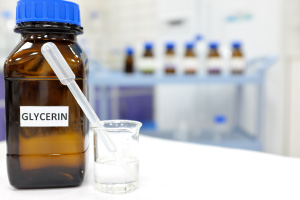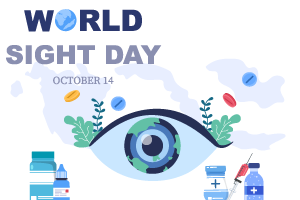

Witnessing small bumps on your skin, around hair follicles? This can be an outbreak of keratosis pilaris, also known as chicken skin. While keratosis pilaris is harmless, its unpleasant appearance is the cause of concern. Read through to learn about keratosis pilaris causes and the best treatment for keratosis pilaris.
What is Keratosis Pilaris?
Keratosis Pilaris is a skin condition marked by dry, rough, and tiny bumps that appear around the hair follicles on the skin. The outbreak of keratosis pilaris is typically seen on the upper arms, thighs, cheeks, and buttocks. Keratosis pilaris face eruption is relatively uncommon. The condition is characterised by light-coloured, skin-coloured, white, red, or brown bumps, which can be itchy but not contagious.

Who is Most Likely to Get Affected by Keratosis Pilaris?
Keratosis Pilaris is typically prevalent in children, adolescents, and teenagers as it is known to worsen with puberty. It is a self-limiting condition and wanes with age.
However, keratosis pilaris can be persistent for:
- People with fair skin
- Those suffering from skin conditions like eczema
- People suffering from asthma, hypothyroidism, diabetes, Cushing’s syndrome, and Down syndrome
- Overweight or obese people
Keratosis Pilaris Causes
The main reason for keratosis pilaris is the buildup of keratin in the hair follicles. Keratin is one of the structural proteins present in the body. It is responsible for the formation of the hair, nails, and skin’s outer layer and makes them healthy and strong.
As the keratin buildup clogs the opening of the hair follicles, it leads to an eruption of small bumps known as keratosis pilaris.
Dermatologists suggest that it is seen to be associated with certain skin conditions like eczema and also, genetic reasons are the cause of keratin build-up in the hair follicles. The condition typically worsens during the winter months.
Keratosis Pilaris Symptoms
As discussed above, Keratosis pilaris is a visually unappealing skin condition. It is marked by:
- Rough, dry skin
- Light-coloured, skin-coloured, white, red or brown bumps on the face, legs, back, chest, and butt region.
- Itchy goosebumps
- Skin irritation during winter or dry months
Keratosis Pilaris Diagnosis
Keratosis pilaris is diagnosed with the help of a simple physical examination. A certified dermatologist can pick up the signs of the condition by looking at the location and characteristics of the bumps. As the eruptions of keratosis pilaris are around hair follicles, the palms of the hands and soles of the feet are not affected. Also, the bumps are painless, dry (with no fluid accumulation), rough to touch, have a discoloured appearance and turn slightly itchy on scratching.
The diagnosis of keratosis pilaris seldom requires an allergy test or biopsy.
Keratosis Pilaris Treatment
Keratosis pilaris is a harmless condition. There is no keratosis pilaris cure per se and the condition can be left untreated. However, it’s due to its unpleasant appearance that it becomes a concerning condition for most of the people. However, a range of cosmetic products can help improve the appearance of keratosis pilaris. These include:
1. Topical Exfoliants
Exfoliating products help remove dead skin cells from the surface of the skin. This helps unclog the blocked pores and ease the condition. Topical exfoliants typically contain chemicals like alpha-hydroxy acid, lactic acid, salicylic acid, or urea. So, depending upon their strength, these exfoliants are available over-the-counter or with a prescription.
2. Moisturising Lotions
Dry skin worsens keratosis pilaris. Therefore, a moisturising cream or lotion can be the best treatment for keratosis pilaris. Applying an over-the-counter moisturiser will help keep the skin well hydrated. This will soften the bump and minimise their appearance. Moisturiser can be applied several times throughout the day.
For best results, apply when the skin is still damp. Also, the best lotion for keratosis pilaris is one that contains ammonium lactate and alpha hydroxy acids.
3. Retinoids
The use of retinoids, a class of compounds derived from Vitamin A, is an effective way to prevent the clogging of hair follicles. Creams for keratosis pilaris usually contain tretinoin and tazarotene, the two most potent retinoids that prevent hair follicles from clogging. They work by increasing cell turnover and clearing keratin build-up around hair follicles.
It is important to remember that the use of creams for keratosis pilaris can cause skin irritation and dryness. Furthermore, pregnant women and breastfeeding mothers are advised not to use topical retinoids.
4. Laser Treatment
Laser therapy is an effective way to treat severe redness and inflammation caused by keratosis pilaris. Laser treatment only helps lessen the discolouration of the skin, making it appear smooth and clear. Laser treatment is often used in conjunction with topical exfoliating creams, moisturising lotions, and retinoids. Keratosis pilaris treatment through laser therapy might require numerous sittings.
Keratosis Pilaris Prevention
Dry skin worsens keratosis pilaris. Therefore, a skincare routine that avoids excessive drying of the skin can help prevent keratosis pilaris. Listed below are the suggested changes in the skincare routine that can help when adopted:
- Reduce the time spent in showers. Bathing for too long removes the healthy oils from the skin, leaving the skin dry and itchy. Maximum shower time is about 10 minutes which is enough to cleanse the skin completely without causing dryness.
- Take a shower with lukewarm water. Keratosis pilaris worsens in cold conditions, so avoid cold water showers. Likewise, hot water showers remove the body’s essential oils. Also, limit bathing to just once a day.
- Use soap with added essential oils so that it does not leave your skin dry and stretched.
- Use a mildly exfoliating soap or body wash. Be gentle while scrubbing your skin, as harsh scrubbing can irritate the skin and worsen keratosis pilaris.
- Moisturise your skin when it is still damp – i.e. within 5 minutes of bathing.
- Moisturise at least 3-4 times a day to avoid skin from getting dry.
- Choose a heavy and thick oil-free cream or lotion and apply it generously.
- Use a humidifier to hydrate drying skin.
- Avoid getting skin tans.
- Consider laser hair removal instead of shaving or waxing skin if you have keratosis pilaris and want to avoid worsening it.
- Do not pick or scratch bumps as this can lead to scarring.
Keratosis Pilaris Home Remedies
As keratosis pilaris has no structured course of treatment, keeping its incidence and appearance low is the key. Several home remedies help in doing this. These include:
1. Apple Cider Vinegar
Apple cider vinegar is naturally rich in malic acid, a type of alpha hydroxy acid. Alpha hydroxy acids naturally exfoliate the skin and help open clogged skin pores. The best way to use apple cider vinegar for keratosis pilaris is to dilute it with an equal quantity of water. Use a cotton applicator to apply it to the affected areas. Rinse off nicely with water. As apple cider vinegar can cause dryness and irritation, it is not recommended for use in people with sensitive skin.
2. Baking Soda
Baking soda has great exfoliating properties and is a safe and effective way to unclog hair follicles. Mix two teaspoons of baking soda with warm water to form a thick paste. Apply the paste to the affected areas and gently scrub in small circular motions. Rinse away with lukewarm water after five minutes.
3. Coconut oil
Virgin coconut oil is a great moisturiser for the skin. It also has anti-inflammatory and antibacterial properties, which help to reduce skin discolouration and inflammation. You can add a few drops of coconut oil to your bathing water. Alternatively, apply it to the skin when it is still damp.
4. Drink Plenty of Water
A well-hydrated body is less likely to develop keratosis pilaris. Furthermore, dry skin worsens keratosis pilaris. So, drink plenty of water and other fluids to keep the skin well-hydrated and reduce the appearance of chicken skin or keratosis pilaris.

Conclusion
Keratosis pilaris is a common skin condition. It affects almost 50-80% of teenagers and begins to settle around the mid-20s. The condition is marked by the appearance of bumps around the hair follicles. Keratosis pilaris is harmless and non-contagious but its appearance can be unsightly for some.
So, keratosis pilaris cure broadly includes ways to clear clogged hair follicles. Keratosis pilaris treatment for severe cases includes topical exfoliating agents, retinoids, and laser treatment.
Generous application of a moisturising lotion can prevent the loss of moisture from the skin. Excessive skin dryness is known to be the most common cause of keratosis pilaris. A proper skincare routine and home remedies can prove really helpful in correcting the condition. However, even without treatment, most cases of keratosis pilaris will settle completely by the age of 30.33




